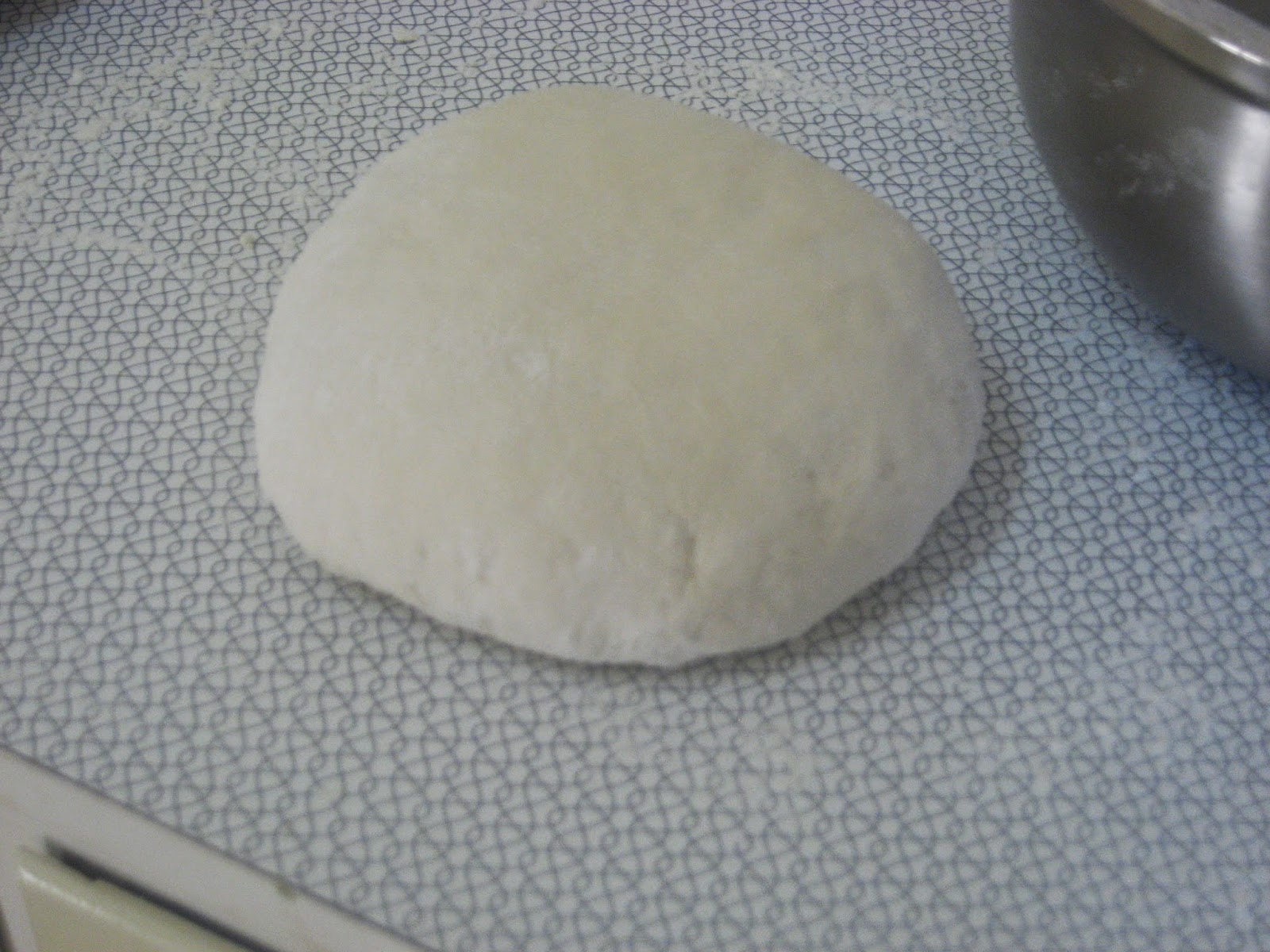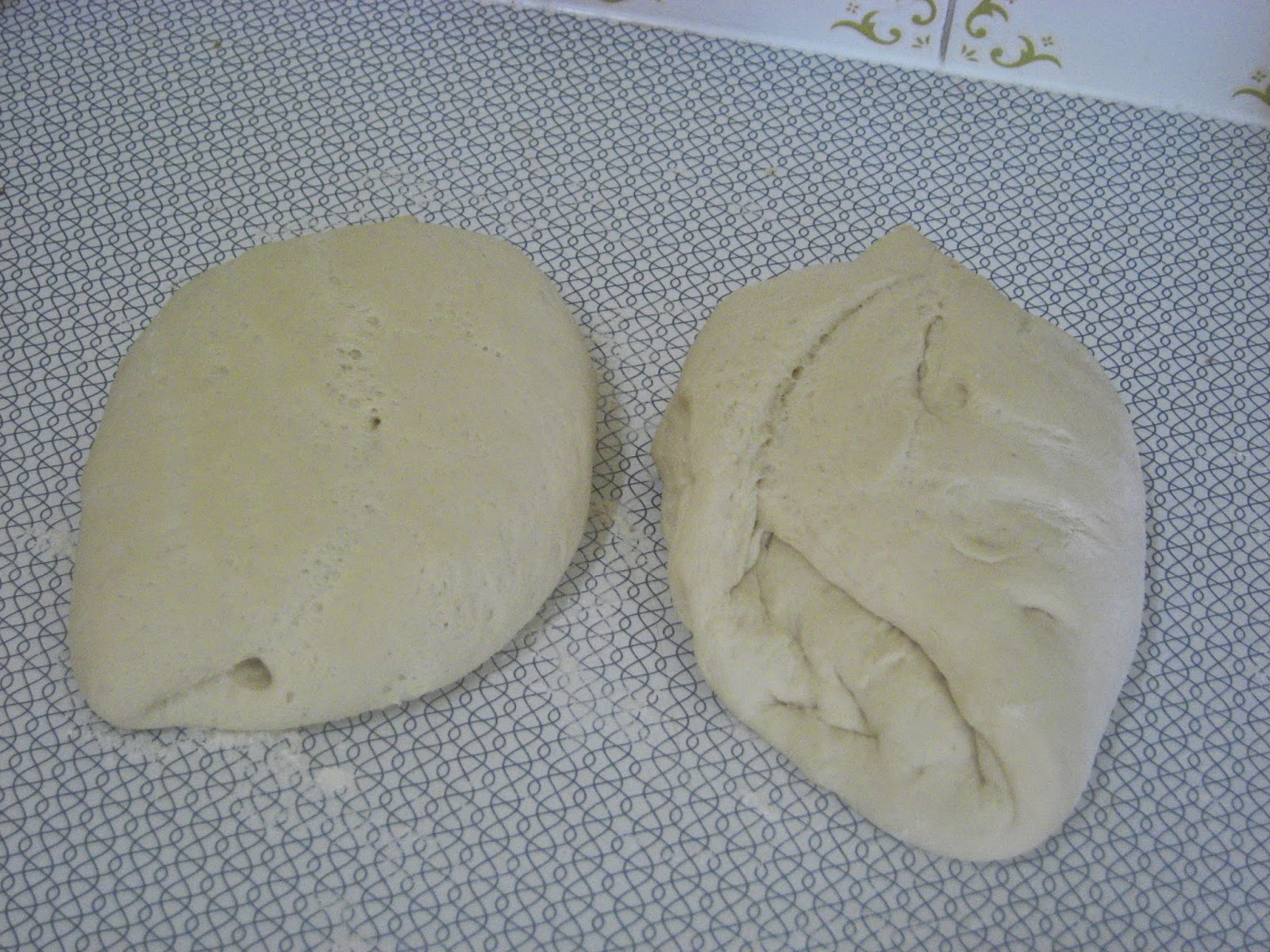 |
| French Bread -- hot right out of the oven |
Do you love crusty bread with a soft crumb on the inside? I know I do and today, I ventured into the world of baking it at home.
Baking bread is not as difficult and time-consuming as I want to think it is. The biggest chunks of time go to rising which I don't need to be present for! So join with me and we'll make french bread together.
 |
| My set-up for bread-making: mixer with large bowl, flour, yeast, salt, water, egg, whisk, rubber spatula, metal bowl for rising, and the breadbox. |
This recipe comes from the Better Homes and Gardens cookbook.
French Bread
5 1/2 to 6 cups all-purpose flour
2 packages active dry yeast
2 tsp salt
2 cups warm water (115F to 120F)
cornmeal
1 slightly beaten egg white (optional)
1 TBSP water (optional)
 |
| Close-up of the ingredients |
In a large mixer bowl, combine 2 cups of flour, yeast, and salt. Add warm water. Beat at low speed of electric mixer for 30 seconds, scraping sides of bowl constantly. Beat 3 minutes at high speed. (I followed this part of the directions exactly, using a timer.)
Stir in as much of the remaining flour as you can mix in with a spoon. (I dumped in 1 cup of flour at a time, up to a total of 5 cups, and was using a rubber spatula to stir it.)
Turn out onto a lightly floured surface.
 |
| The dough turned out onto the counter before any kneading. |
Knead in enough of the remaining flour to make a stiff dough that is smooth and elastic (8 to 10 minutes total). (This is the trickiest part of making dough and with some practice, you will get it. In my dry Australia climate, 21% humidity yesterday, I only added about 1/2 cup of flour and kneaded for 4-1/2 minutes to get a good texture.)
Pay attention to how your dough looks and feels more than the timer and measured flour. I stopped kneading early because I was concerned that adding more flour would cause the bread to be too dry and crumbly when it baked. If your humidity is higher, you will use more flour.
When done kneading, shape dough into a ball.
 |
| The dough, after kneading, and shaped into a ball. |
Place dough into a lightly greased bowl. Turn once to grease all surfaces.
 |
| Dough is ready for first rising. |
 |
| My happy helper. :) Next time, I will help her make individual loaves that we'll use for hoagie sandwiches. |
 |
| My kitchen was chilly so I had warmed the oven, turned it off, and set the dough in there to rise. |
 |
| After resting. |
 |
| One rectangle ready to be rolled. |
Roll up tightly from long side and seal well. Taper ends. Place, seam side down, on a greased baking sheet sprinkled with cornmeal. If desired, brush with a mixture of egg white and water.
 |
| Two beautiful loaves ready to go into the oven. I didn't have cornmeal and so used flour. |
Cover and let rise until nearly double (about 45 minutes). I set them on top of the oven as I had it warming up.
With a sharp knife, make 3 or 4 diagonal cuts about 1/4 inch deep across tops of loaves (scoring).
 |
| Scored loaves in the oven, ready for baking. Notice how they have stretched out and are poofier than they were before the last rising. |
Bake at 375F for 40 to 45 minutes. (I adjusted the temp down 25F for the dark colored baking sheet.)
 |
| Hot bread, fresh from the oven. |
Cool. Makes 2 loaves.
 |
| YUM!!! |
Cheers!
Comments
Post a Comment